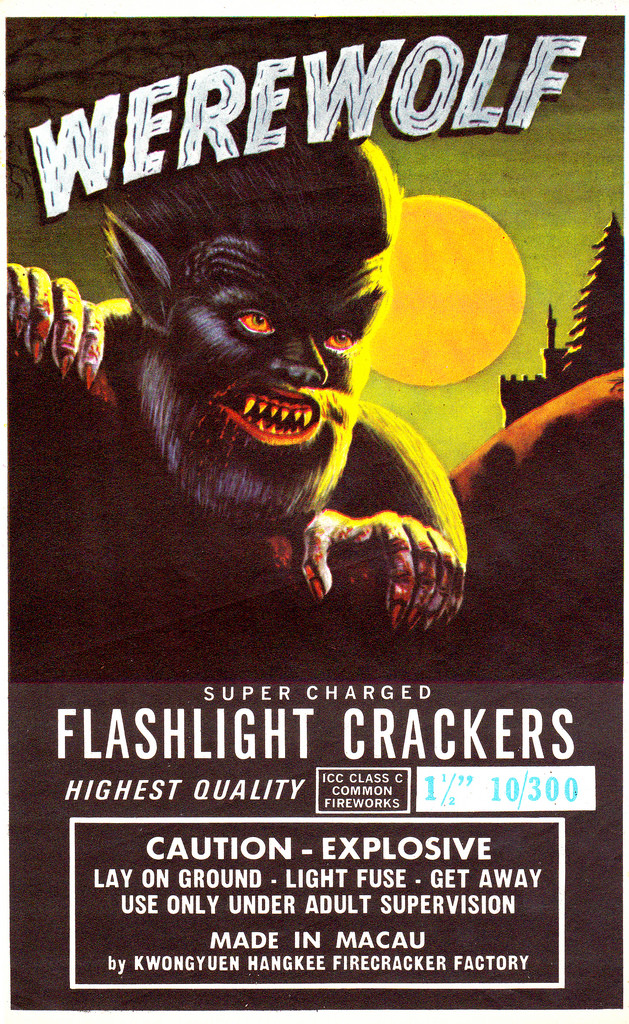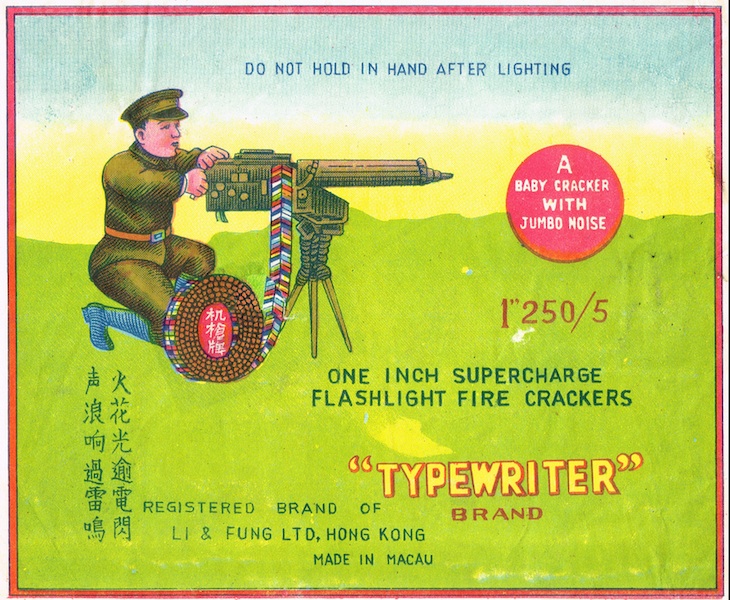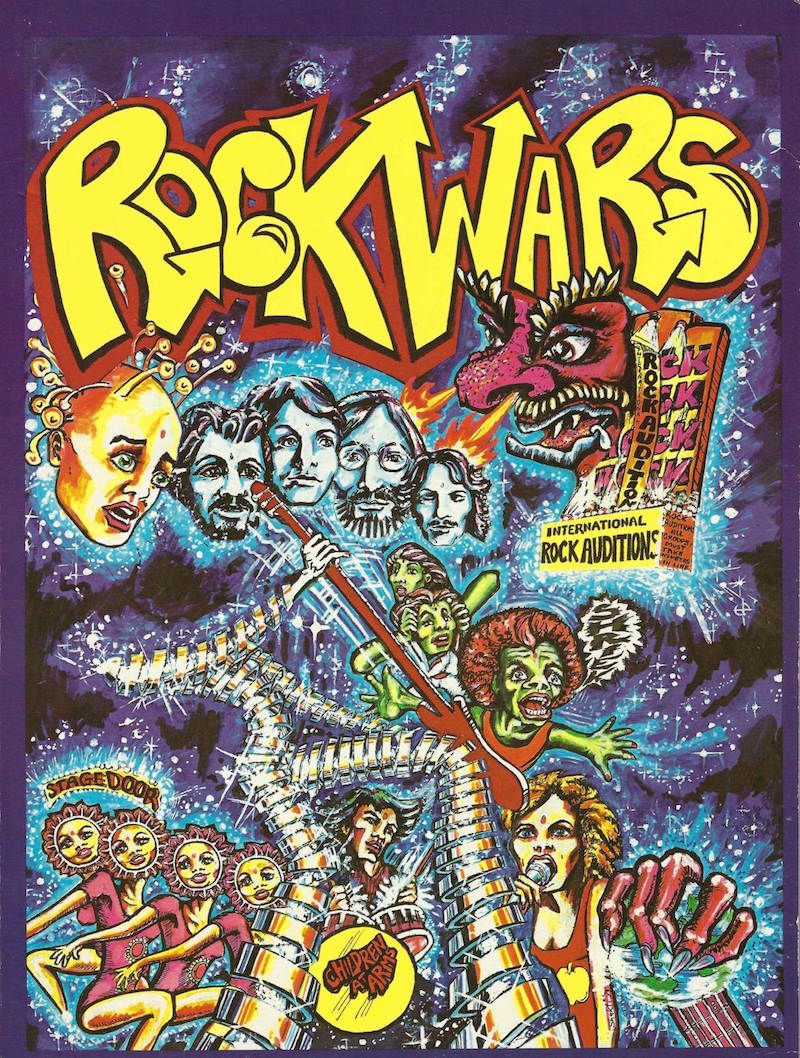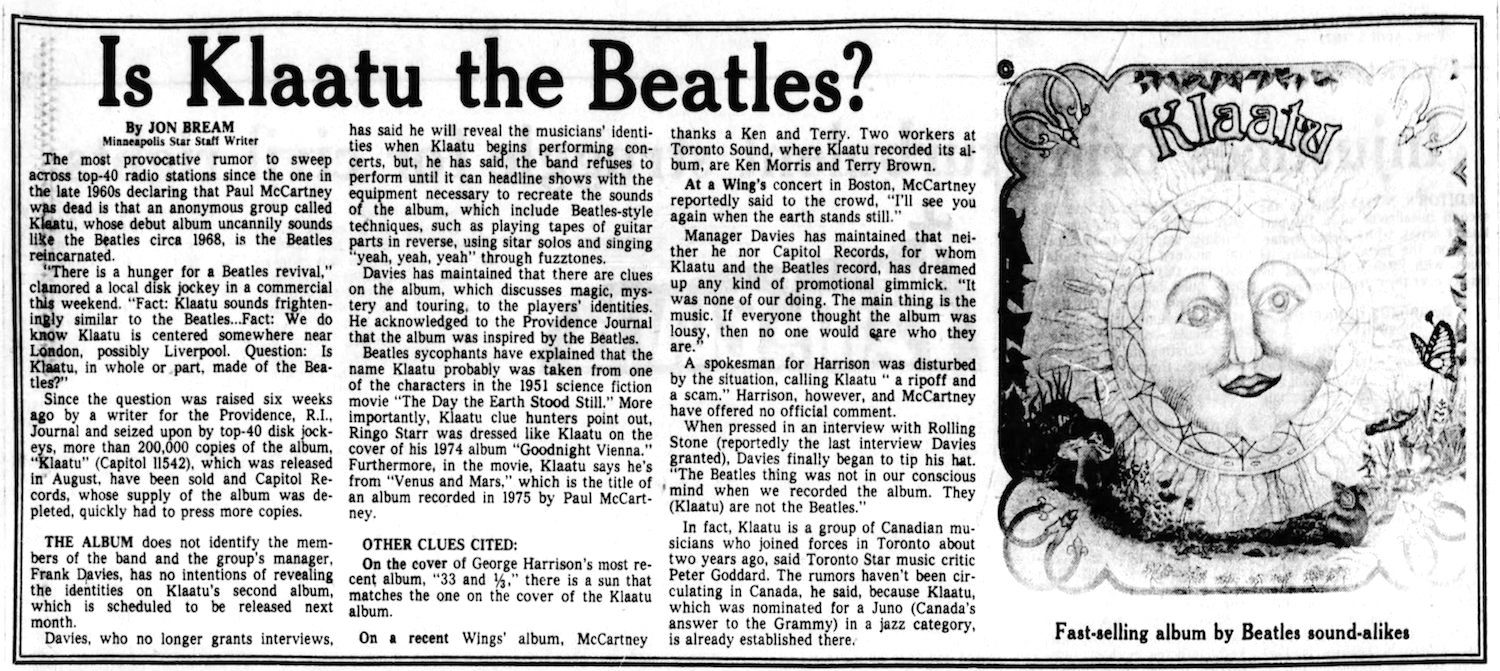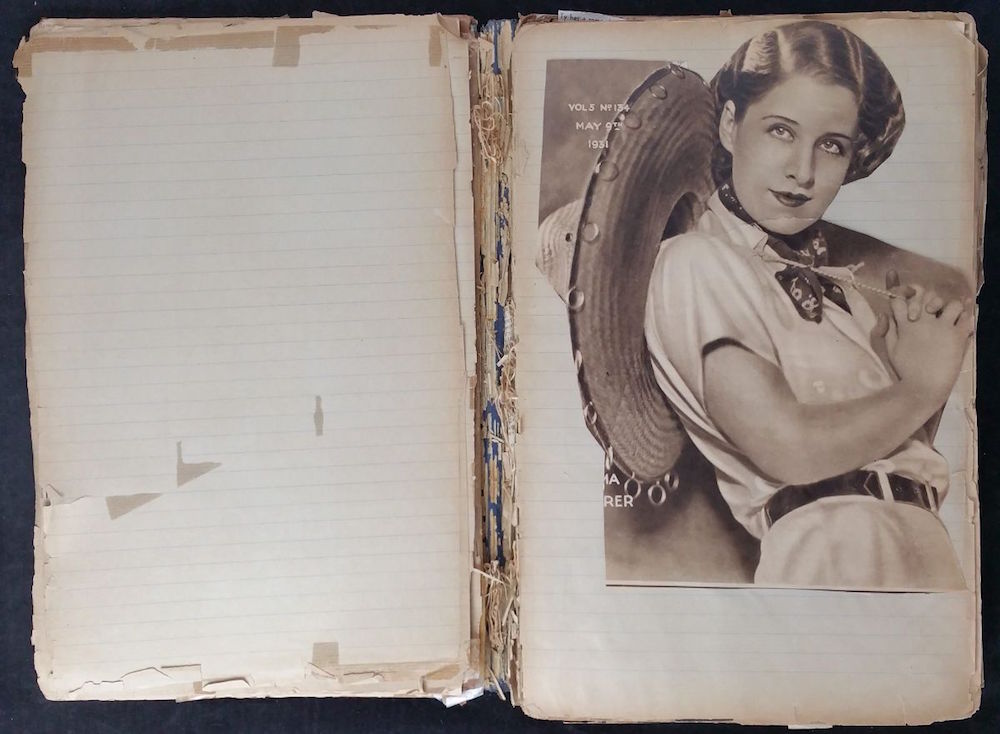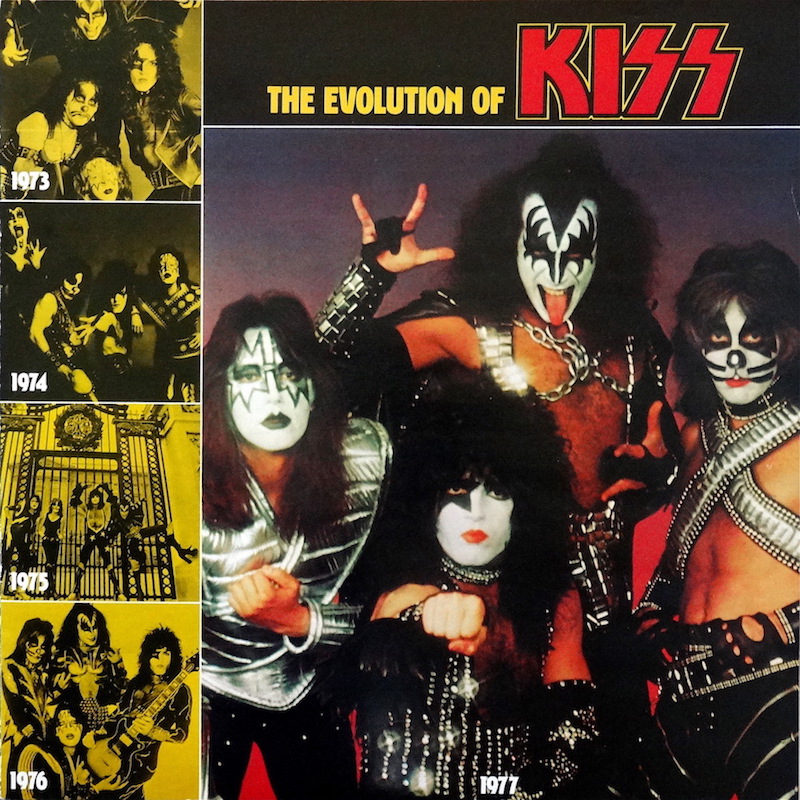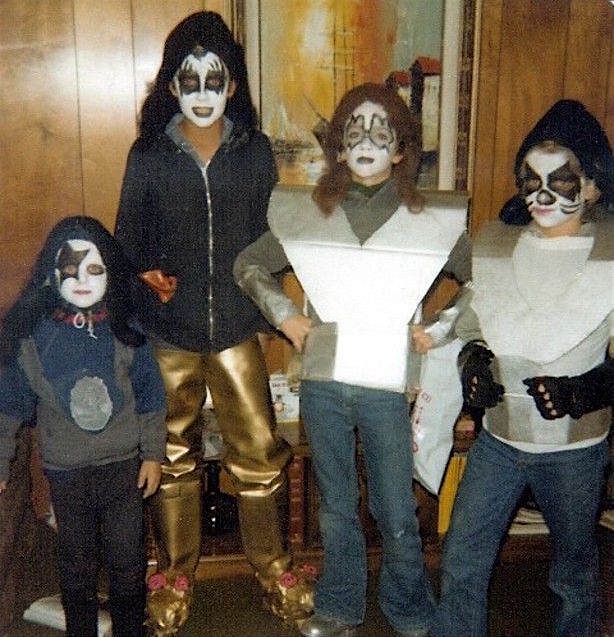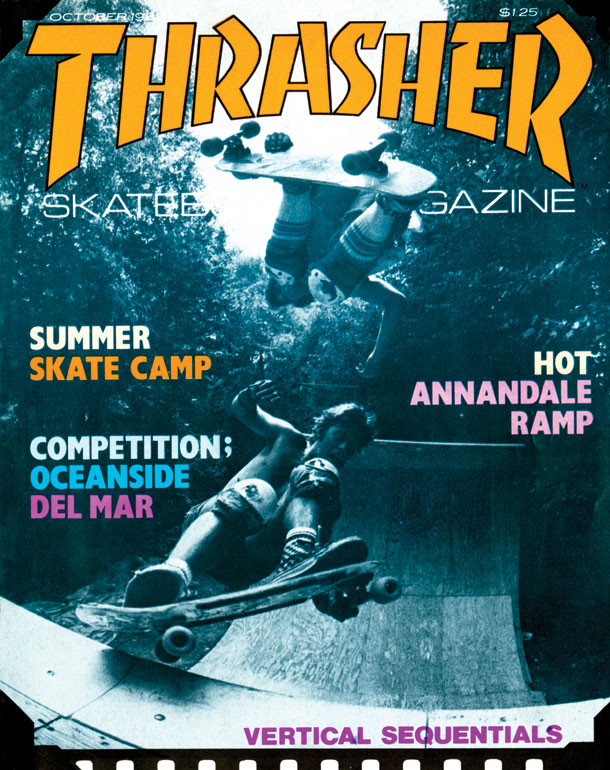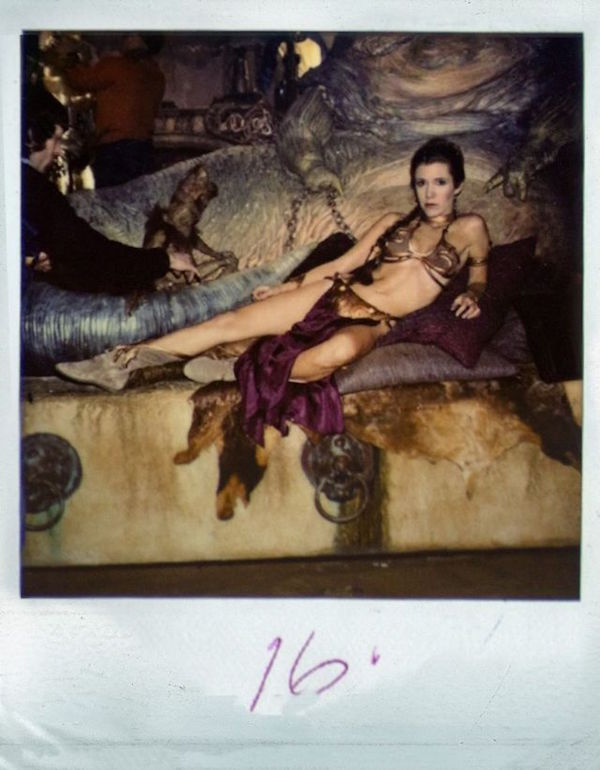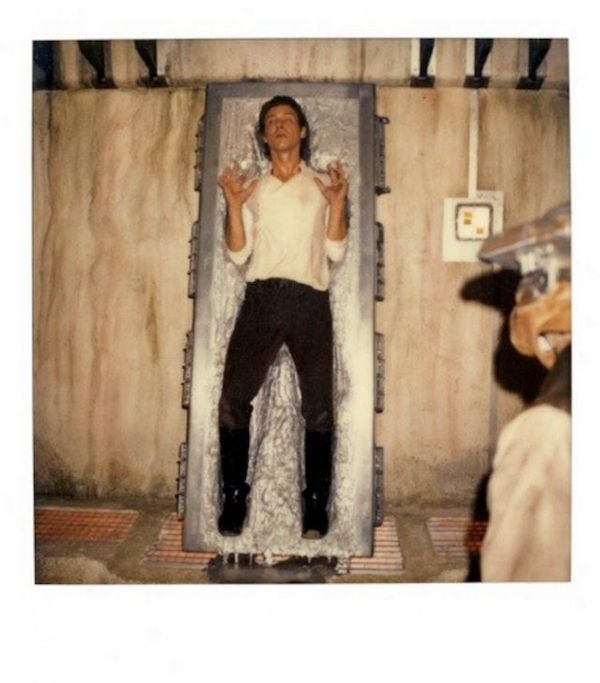
A surreal shot of Jayne Mansfield floating in her pool surrounded by her novelty hot water bottles designed by Don Poynter.
“I stayed in California sculpting her for the mold for a week. I could have done it in two days but thought — why rush it?”
—the creator of whiskey-flavored toothpaste and other weird delights, inventor and designer Don Poynter musing about his collaboration with Jayne Mansfield
A native of Cincinnati, Ohio, Don Poynter showed an aptitude not just for creating things, but also possessing a good head for business as a young child. When he was eleven, Poynter began making and selling remote-controlled tanks with working cannons. While a student at the University of Cincinnati, Poynter formed Poynter Creations (later changing the name to Poynter International) and the company would begin its weird journey making bizarro novelties of all kinds for decades, the first being the wildly successful partnership of booze and good oral hygiene, Whiskey-Flavored toothpaste in 1954. In the early 60s he created the boozehound icon “melting wax” that appears to drip from the top of Maker’s Mark whiskey bottles. In 1967 he put out “Uncle Fester’s Mystery Light Bulb” (an homage to actor Jackie Coogan’s portrayal of lightbulb-loving Fester Addams in The Addams Family television show) and sold a staggering fourteen million of them. He was a champion baton twirler at UC, and this particular talent got him a gig touring with the Harlem Globetrotters. As cool as Poynter’s many life achievements are, there are few things cooler than the nearly two-foot-tall hot water bottle he sculpted in the image of blonde temptress—and good pal of Church of Satan founder Anton LaVey—Jayne Mansfield.
Poynter had a knack for taking the public’s temperature as it pertained to embracing novelty items. In other words, Poynter knew you wanted a talking toilet seat before you did. When the idea came to him to make a hot water bottle in the image of Jayne Mansfield in a black bikini, he was fully confident such a product would sell like crazy. He spent weeks sculpting the water bottle while negotiating with Mansfield’s Hollywood honchos, who weren’t at all keen on the idea of their star becoming one of Poynter’s novelties. It seems Jayne was fond of the idea from the start and she asked Poynter to come to Hollywood so they could work on their joint venture.
In 1957 Poynter flew to Hollywood where he would remain for a week sculpting the actual Jayne in his studio on a daily basis. Poynter had to throw away his original sculpture of Jayne and start from scratch after realizing the 5’5 actress was not as tall as he had imagined. He also had the pleasure of shopping for a cheeky nightie for Mansfield to wear in a pin-up-style promotional ad for the bottle. Jayne didn’t own any herself as she slept in the nude.
Poynter paid Mansfield five grand for her time, and before the actress’ untimely death in 1967 his company sold 400,000 water bottles for ten bucks a pop. As of this writing, as far as I can ascertain, Poynter is still hanging out in Cincinnati “acting much younger” than his age of 94. Photos of Jayne and Poynter posing with her water bottle, and the gloriously bodacious bottle itself follow.
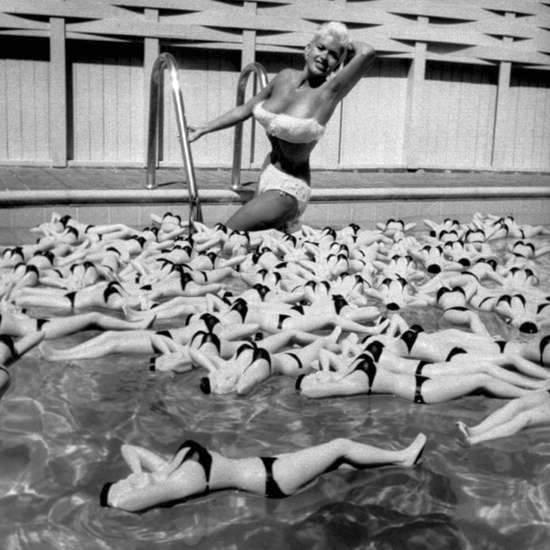
Another shot of Mansfield in her pool with her water bottles.
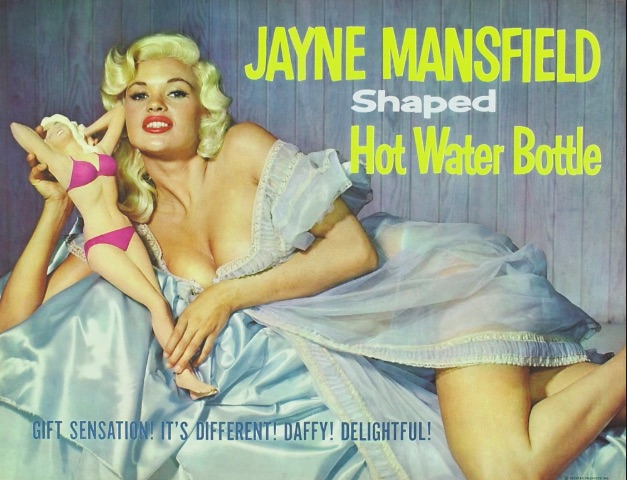
The illustrated ad for the Jayne Mansfield Hot Water Bottle. One should presume Mansfield is wearing the nightie purchased by Poyner for the promotional ad.
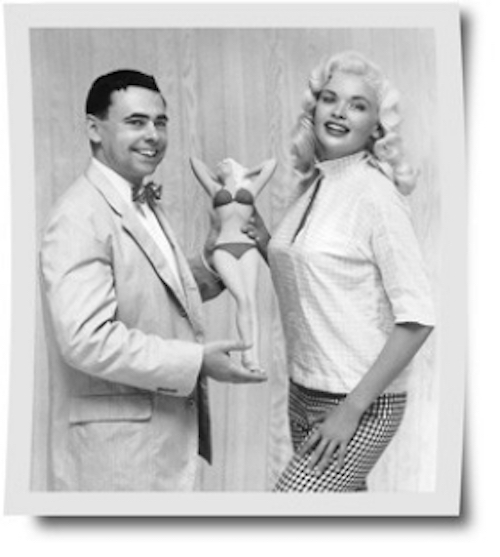
A very pleased looking Poynter pictured with Mansfield and her hot water bottle.
Continues after the jump…








